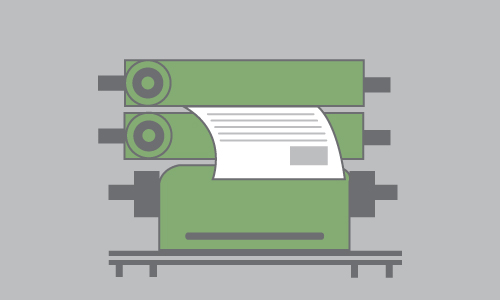For an industry like package printing, it’s easy to see yourself as the most important part of the value chain. Whether it’s printing labels, printing of flexible packaging, or printing on the package itself, your industry’s work comes into contact with every single consumer—every single day.
However, the operations of any printing operation—Gravure, flexographic, offset, or digital, among others—produces a great deal of volatile organic compounds. It’s often considered a “necessary evil” of doing business, as printing doesn’t happen without solvents, and the use of solvents creates VOCs.
Five VOC-Laden Processes in Package Printing
In a recently released report, the Task Force on Techno-Economic Issues (TFTEI) discussed the impact of VOCs and VOC Abatement in the package printing industry, finding that in the packaging process, 80% of all products are printed, 50% are laminated, and another 25% have a functional coating. All of this adds up, and in addition to printing itself, many other processes contribute to the production of VOCs and need to be tackled through administrative or functional needs. Below, we explore some of the printing styles and processes in which VOC Abatement needs to be treated with high priority.
Flexography
One of the most common printing methods in packaging, Flexography is a printing process using an image carrier of rubber or elastic photopolymers on which the printing areas are above the non-printing areas, using liquid inks that dry through the evaporation of organic solvents.
Used for many different packaging applications, Flexography—or Flexo—is common because of its ability to handle a variety of substrates, color runs, and solvent configurations. While use of water-based inks is one way to reduce VOC emissions, the use of such inks is more complicated for some substrates such as film or foil.
Gravure Printing
Another common printing method for packaging is that of gravure/rotogravure, a process that uses a depressed or sunken surface for the image. The image areas consist of honey comb shaped cells or wells that are etched or engraved into a copper cylinder, while unetched areas represent the unprinted areas. In gravure printing, there are four key processes: Image Preparation, Cylinder Preparation, Printing, and Finishing.
Coating
The coating process is both important in and similar to the package printing process, regarded as a very thick printing layer and often done in-line with printing. The while the coating materials and solvents differ from those used in printing, the machinery is similar and the coating process often uses one of the following four technologies: Direct Gravure, Reverse Gravure, Offset Gravure, and Smooth Roll.
Lamination
Lamination is the technique of manufacturing a material in multiple layers (at least two), so that the composite material achieves improved characteristics such as strength, stability, insulation, appearance or other properties. In the packaging industry, lamination is a very important process, as approximately 50% of all flexible packaging products are laminated.
Cleaning
Cleaning is a very important and often underestimated process in the printing industry. Even though it is not producing or improving the production output itself, it has major influence on the quality and endurance of the machines. Furthermore, it often operates with solvents and thus provides several options for VOC abatement. With many different types of solvents used in the cleaning process, each differing in their function (fast dry vs. slow dry).
VOC Abatement for the Printing Industry
From printing to cleaning, VOCs are present throughout the package printing process. Knowing this, each solvent—whether it is an adhesive, ink, or cleaning solution—creates different types of VOCs that need to be documented, minimized, or destroyed. Knowing this, there are many places that printing companies can focus. As mentioned above, the use of water-based inks is an option for some companies, but often present a challenge when printing on film or foil. Here are a couple leading options:
Abatement Planning and VOC Destruction
With so many different solvents being used for unique needs, the right abatement and destruction strategy starts with accurate and detailed documentation of exhaust components and concentrations. With this documentation complete, the next step is to ensure that your destruction equipment is handling VOCs effectively and efficiently.
The right pollution control and VOC destruction equipment can reduce ongoing costs and provide destruction efficiency at or above that required by the strict EPA regulations on the printing and graphic arts industry.
The CMM Group offers consulting services and specializes in the design and manufacture of air pollution control solutions for the graphic arts and package printing industry. Learn more about Regenerative Thermal Oxidizers for the Graphic Arts Industry and see some of our case studies featuring companies like yours below:
- Graphic Arts Printer Replaces Emission Control System With RTO
- Heat-Set Web Offset Printer Replaces Catalytic Units With RTO
- Flexible Packing Operation Replaces APCS With RTO
- Coating & Laminating Company With Rewarranted Catalytic Oxidizer
- Wine Capsule Flexo Printer Installs RTO To Control Emissions
Ready to learn more? Download our VOC Abatement Guide and contact us with your specs.




